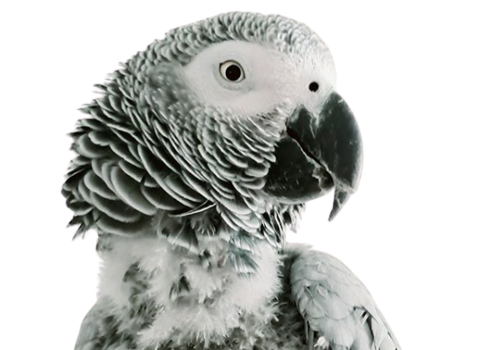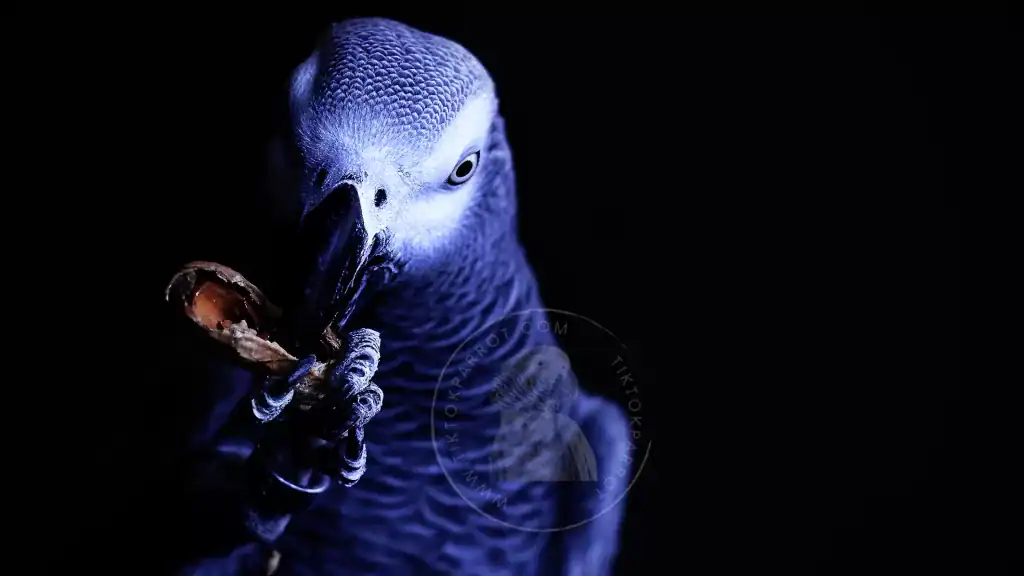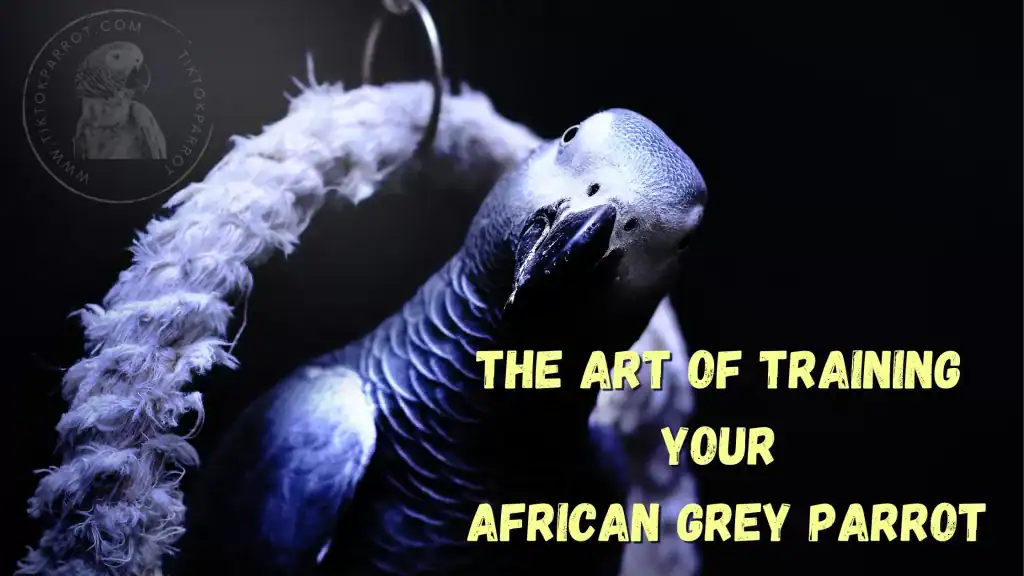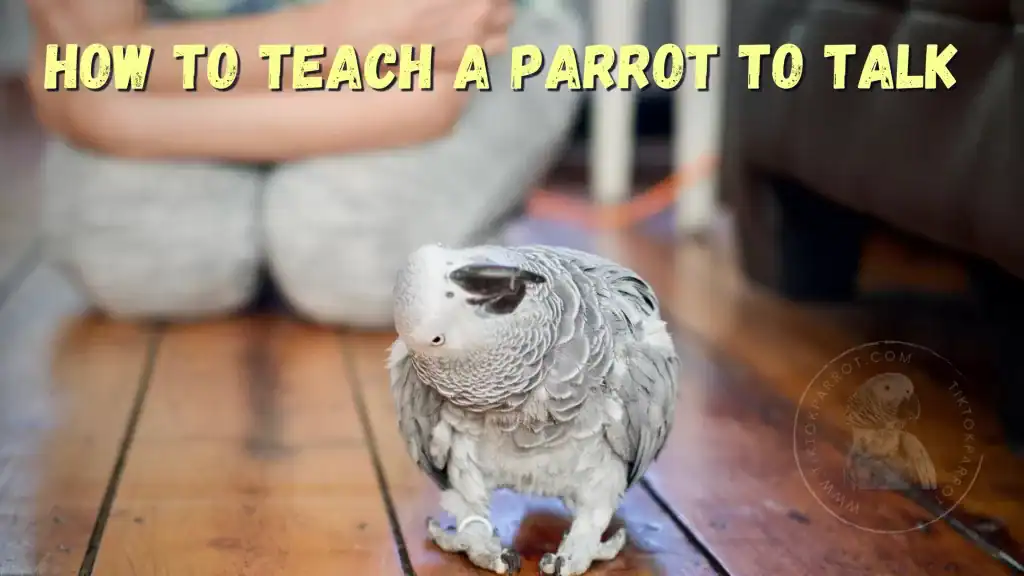African grey parrots are highly intelligent and inquisitive creatures. They have an innate ability to mimic human speech and can learn a wide variety of tricks and behaviors. Training your grey parrot not only helps to keep them mentally stimulated and engaged, but it can also help to build a strong bond between you and your pet.
In this blog post, we will share some tips and tricks from professional trainers on how to train your African grey parrot. From the basics of positive reinforcement to advanced tricks, readers will gain insight into the unique training techniques that work best for these intelligent birds.
If you are the proud owner of one of the most intelligent parrots in the world, give yourself a pat on the back. African Grey parrots receive much recognition for their perfect pronunciation and clear enunciation of sounds and words. As such, owners have to do their part in making sure that their beloved pet receives proper training as well as appropriate care. Hence, pet owners have to know the proper way of training an African Grey.
Training an African Grey involves a lot of willpower and focused attention on the part of the pet owner. Although the African grey parrot is highly intelligent, some people even say it is as intelligent as a five–year–old kid, proper training is necessary to enhance the parrot’s potential.
Pet owners or trainers have to be very careful with the words they say as the African Grey parrot is an extremely fast learner. You say one insignificant word and you can be sure that your pet parrot will copy what you just said. The parrot is also very receptive to other sounds as well. An African Grey parrot can mimic a ringing phone, a beeping microwave, and other household sounds.
In training an African Grey, you might want to resort to positive reinforcement to get your pet to say a desired word. You have to do this so that your pet does not feel pressured and you do not get frustrated.
A word of advice: Frustration and anger will lead you nowhere. So, better stay calm and focused and just keep up the positive reinforcement. Just like kids, parrots and birds in general, love to have fun and dislike work. Putting together fun and learning is the best way to go if you want to be successful in teaching your parrot new skills.
A good method to try in training an African Grey to say new words is through the use of food or toys as a reward. For this method, you will need a bird treat and another person as a helper. With your parrot and your helper in the same room, let the helper say the word you want the parrot to learn. Every time the helper says the word correctly, reward him with a treat. You can then ask the parrot to repeat the word that the helper said.
If your parrot says it correctly, give him a treat. If he does not, continue prompting the helper, and soon enough, the envious parrot will say the desired word in order to get a treat for himself, too. You can also use positive reinforcement for stopping bad behavior and encouraging good ones.
In training an African Grey to be at home with strangers, you might want to introduce your pet to the family one small step at a time. Typically, African Grey parrots are shy around strangers so it would be horrific on your pet’s part to be plunged into a sea of many unfamiliar faces.
Have your pet get used to the other members of the family for a few minutes each day and gradually increase the amount of time the pet spends with the family. Pretty soon, your African Grey parrot will be everyone’s favorite pet and will fit right in with everybody else!
Get to Know Your Parrot’s Personality
The first step in training your parrot is to get to know its personality. Just like people, every parrot has their own unique set of traits and behaviors. Spend time observing your parrot to learn what they enjoy, what they don’t like, and what motivates them.
Some grey parrots are very social and enjoy being around people, while others may prefer solitude. Some may be food-motivated, while others respond better to praise and attention. Understanding your parrot’s personality is the key to effective training.
Start with Basic Training
The key to successful parrot training is to start with the basics. Begin with simple commands like “step up” and “step down.” Use positive reinforcement techniques like treats, praise, and attention to reward your parrot when they respond correctly.
Consistency is key when training your parrot. Repeat the same commands and actions each time, and reward your parrot for each correct response. Be patient, as it may take some time for your parrot to learn new commands.
Teach Mimic Sounds and Words
One of the most unique traits of African grey parrots is their ability to mimic sounds and words. Teaching your parrot to mimic words and phrases can be a fun and rewarding experience for both you and your parrot.
To start, choose a simple phrase or word and repeat it often. Use positive reinforcement to reward your parrot when they mimic the sound or word correctly. With consistent training, your parrot will start to associate the sound with the reward, and will eventually learn to mimic the sound or word on command.
Use Positive Reinforcement
Positive reinforcement is a key part of parrot training. Reward your parrot with praise, attention, and treats when they respond correctly to a command. Be sure to use a positive tone of voice and show enthusiasm when training your parrot. This will help to build a strong bond between you and your pet and make training a fun and enjoyable experience for both of you.
What Is Positive Reinforcement
Positive reinforcement is a popular training method among professional trainers, and it can be used to teach your African grey a wide range of behaviors. Positive reinforcement means that your bird is rewarded for good behavior, such as completing a trick, with a treat, praise, or affection. The reward reinforces the bird’s good behavior, making it more likely to be repeated in the future.
Again, remember to reward your bird immediately after it completes the desired behavior, so it associates the reward with the action.
Socialization
Socialization is an essential aspect of training an African Grey parrot. Socializing your bird involves exposing it to different people, animals, and situations to help it become more comfortable and less fearful.
Proper socialization can help prevent negative behaviors such as biting, screaming, or feather-plucking. Professional trainers recommend introducing your African Grey to new experiences gradually, ensuring that your bird feels comfortable and safe. You can gradually increase the level of stimulation, such as noise or activity, as your bird becomes more confident.
Advanced Tricks
Once your parrot has mastered the basics, you can move on to more advanced tricks. Some popular advanced tricks for grey parrots include playing dead, turning around, and waving hello. Use the same positive reinforcement techniques as before, and be patient with your parrot as they learn.
Playing Dead
Teaching your parrot to “play dead” is a fun and entertaining trick that can impress your family and friends. Here are the steps to follow to teach your parrot this trick:
Start with Basic Commands:
Before teaching your parrot the “playing dead” trick, make sure they have already mastered basic commands, such as “step up” and “step down,” and are comfortable with being touched and handled.
Choose a Cue:
Choose a word or phrase, such as “bang” or “dead,” to serve as the cue for the trick. Be consistent with the word you choose and use it every time you want your parrot to “play dead.”
Train in Short Sessions:
Train your parrot in short, five to ten-minute sessions. This will help to keep your parrot’s attention and prevent them from becoming bored or frustrated.
Use Treats:
Use your parrot’s favorite treat to entice them to lie on their back. Hold the treat over your parrot’s head and gently guide them onto its back. As soon as they are lying on their back, give them the treat and praise them with the chosen cue word.
Gradually Increase Duration:
Gradually increase the amount of time your parrot remains on their back before receiving the treat. Start with just a few seconds, then gradually increase the duration over time.
Repeat and Reinforce:
Repeat the training process daily and reinforce the behavior with plenty of praise and treats. Over time, your parrot will learn to associate the chosen cue word with the behavior and perform the “playing dead” trick on command.
In summary, teaching your parrot to “play dead” requires patience, consistency, and positive reinforcement. With these steps and plenty of practice, you can teach your parrot this fun and impressive trick that will delight both you and your feathered friend.
Spin Around
Teaching your parrot to “spin around” is another fun trick that can keep both you and your feathered friend entertained. Here are the steps to follow to teach your parrot this trick:
Start with Basic Commands:
Just like with teaching “playing dead,” make sure your parrot has already mastered basic commands, such as “step up” and “step down,” before moving on to more advanced tricks.
Choose a Cue:
Choose a word or phrase, such as “spin” or “turn around,” to serve as the cue for the trick. Be consistent with the word you choose and use it every time you want your parrot to “spin around.”
Use Treats:
Hold a treat over your parrot’s head and encourage them to follow it in a circle. As your parrot moves around in a circle, use the chosen cue word and praise them.
Gradually Decrease the Treat:
As your parrot becomes more comfortable with the trick, gradually decrease the number of treats you use. Eventually, your parrot will perform the trick with just the cue word and praise as a reward.
Add a Visual Cue:
Once your parrot has mastered the trick with just the verbal cue, add a visual cue to help reinforce the behavior. Hold your hand out in the direction you want your parrot to spin and use the cue word as you do so.
Repeat and Reinforce:
Train your parrot daily with positive reinforcement using treats and praise to associate the cue word with the desired behavior. Over time, your parrot will learn to perform the “spin around” trick on command.
How To Teach A Parrot To Talk
Teaching a parrot to talk is a popular and rewarding activity for many bird owners. Not only is it impressive to hear a parrot mimic words and phrases, but it can also help strengthen the bond between the owner and the bird. However, it’s important to understand that not all parrots will learn to talk, and it can take time and patience to achieve success.
Here are some tips to help teach your parrot to talk:
Choose the right species:
While most parrots are capable of mimicking sounds, some species are better at talking than others. African grey parrots, Amazon parrots, and Eclectus parrots are known for their excellent talking ability.
Start with simple words:
When first teaching a parrot to talk, start with simple words or phrases, such as “hello,” “goodbye,” or the parrot’s name. Repeat the word or phrase clearly and slowly, emphasizing each syllable.
Use positive reinforcement:
When your parrot attempts to mimic a word or phrase, praise and reward them with treats, toys, or affection. This positive reinforcement encourages them to continue trying.
Repetition is key:
Repeat the chosen words or phrases often throughout the day, using them in context, such as when you greet or say goodbye to your parrot. This helps them understand the meaning of the words and when to use them.
Be patient:
Some parrots may take weeks or even months to learn their first words. It’s important to be patient and consistent with training, as every bird learns at their own pace.
Avoid punishment:
As I mentioned above in the post, never punish or scold your parrot if they don’t mimic words correctly. This can be discouraging and may even cause them to stop trying.
Consider using recordings:
If your parrot isn’t picking up on your spoken words, try playing recordings of the chosen words or phrases. This may help them recognize and mimic the sounds more easily.
The bottom line is, teaching a parrot to talk can be a fun and rewarding experience, but it requires patience, consistency, and positive reinforcement. With time and effort, your parrot may surprise you with their impressive vocabulary.
Consistency is Key
Consistency is key when it comes to parrot training. Repeat the same commands and actions each time, and reward your parrot for each correct response. Be patient, as it may take some time for your parrot to learn new commands. With consistent training and positive reinforcement, your African grey parrot can learn a wide variety of tricks and behaviors.
Bonus Tips
I’m not done yet, here are a few additional tips to help you with your African Grey parrot training:
Stay Consistent:
Consistency is key when it comes to training your African Grey. Use the same commands and rewards every time, and try to train your bird at the same time of day, so it becomes a routine.
Keep Training Sessions Short:
African Grey parrots have a short attention span until they fully memorize, so keep training sessions brief and enjoyable. Aim for 10-15 minute sessions, two to three times a day, and try to end on a positive note.
Be Patient:
Training your African Grey takes time and patience, so don’t expect instant results. Remember to remain positive and encouraging, and don’t get frustrated if your bird doesn’t learn a trick right away.
Use Verbal Praise:
In addition to treats, use verbal praise, such as “good boy/girl” or “well done,” to reinforce good behavior. Your bird will appreciate the positive attention and be more likely to repeat the behavior in the future.
Never Use Physical Punishment:
Avoid using physical punishment, such as hitting or shouting at your bird, as it can damage your relationship and trust with your bird. Positive reinforcement is a more effective and humane way to train your African Grey.
My Closing Thoughts (I love to share  )
)
Training your African grey parrot can be an enjoyable and rewarding experience for both you and your bird. With the right techniques, patience, and consistency, you can teach your parrot a variety of tricks and behaviors, including talking, waving, and playing dead.
Remember to be patient, as each bird has its unique personality and learning pace. Professional trainers recommend focusing on positive reinforcement and socialization to ensure that your bird remains happy and healthy while learning new behaviors. So, get started on training your African Grey parrot and have fun!
If you found this blog helpful, It would be great if you could share it with your family and friends who might find it useful as well.
You might like to read these as well
The Secret Life of African Grey Parrots: What You Need to Know Before
African Grey Parrots: The Ultimate Guide to Care and Training
Frequently Asked Questions About African Grey Parrots
Signs that an African Grey is unhappy with you
For more useful content about African Grey parrots, you can subscribe my site with your email to get notification upon publishing a new blog, the subscribe box you can see on the right side of this page. Also if you get an alert on your web browser while browsing my site, allow it and that will also give you an alert whenever I publish a new blog.
Stay safe and much love !





